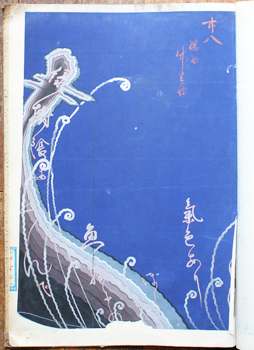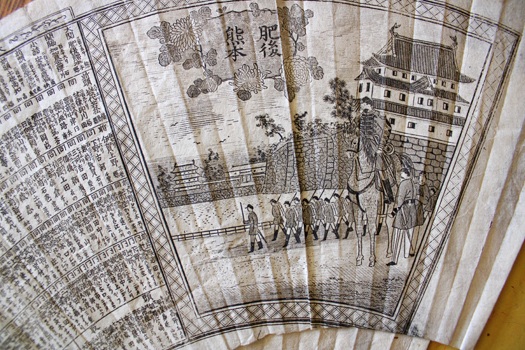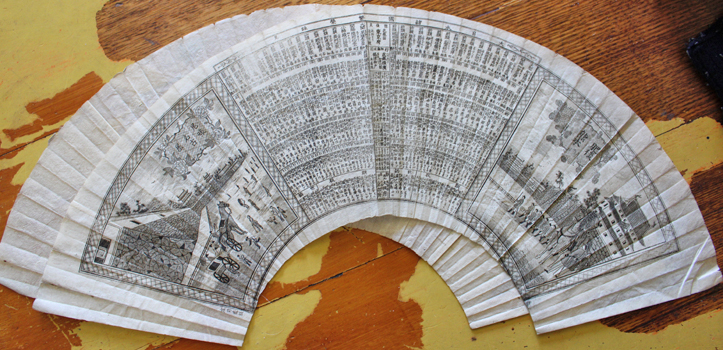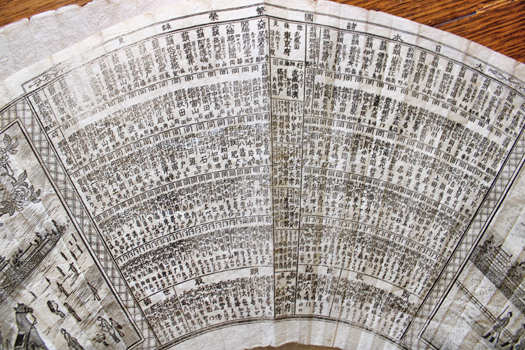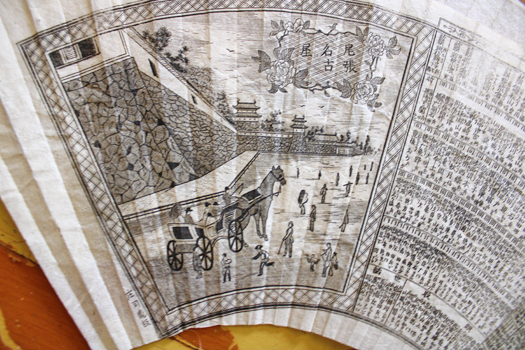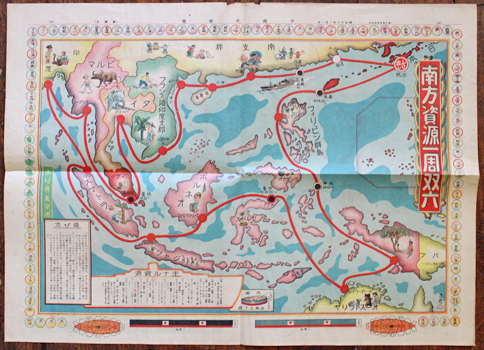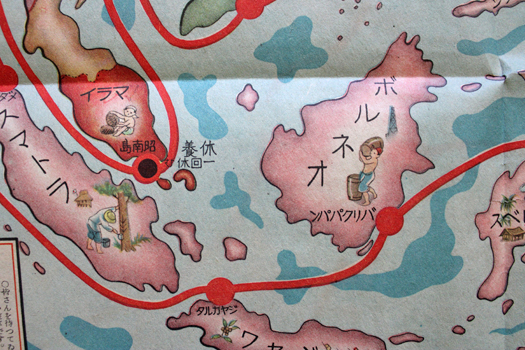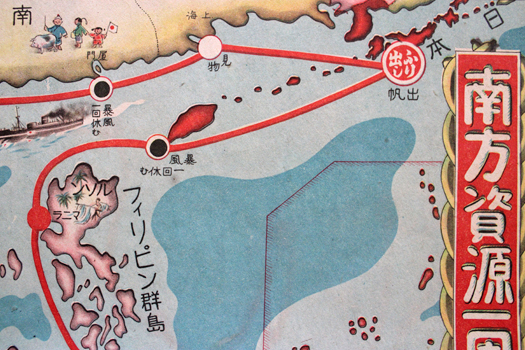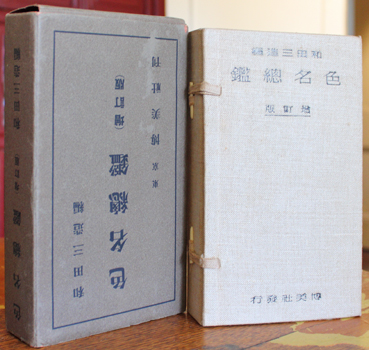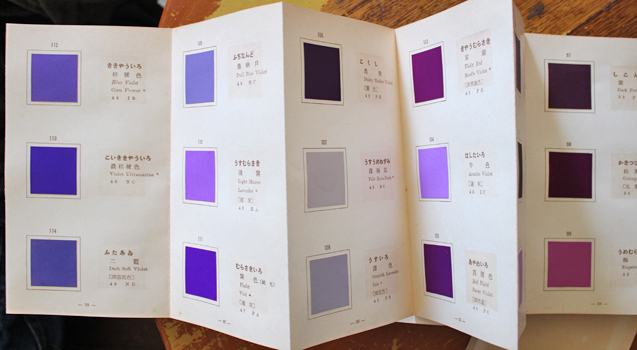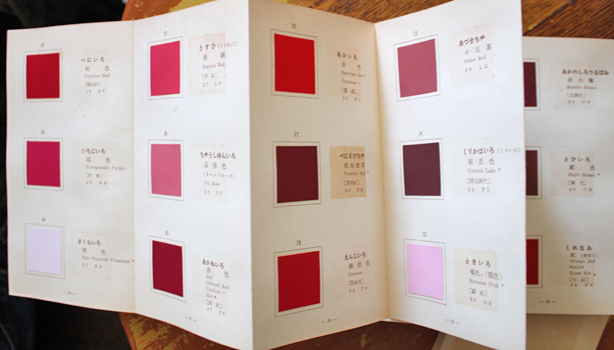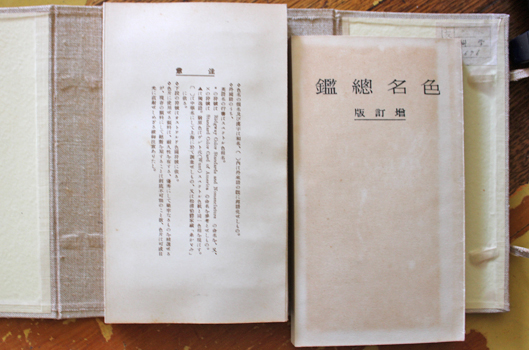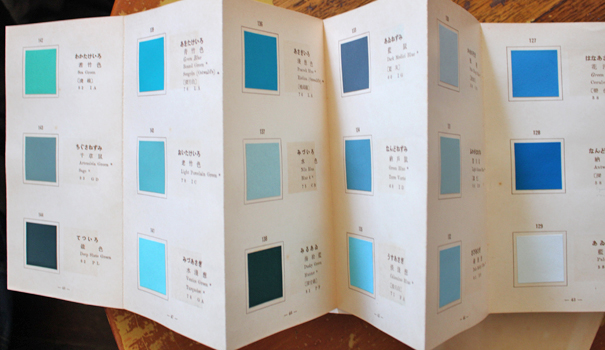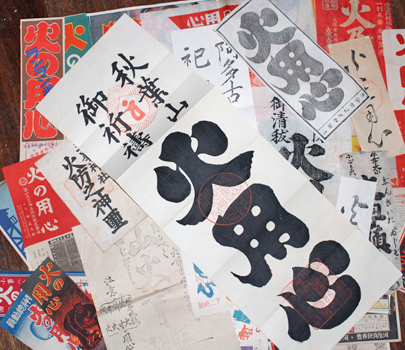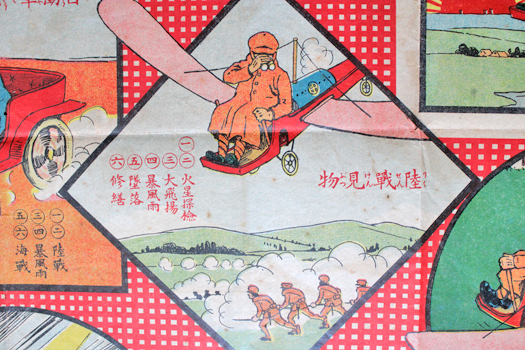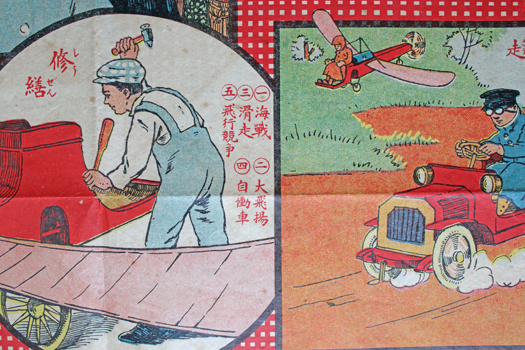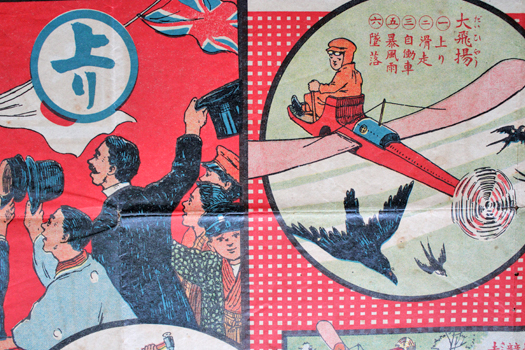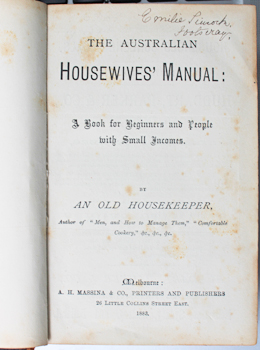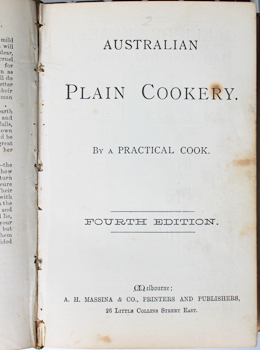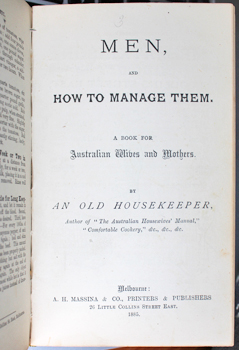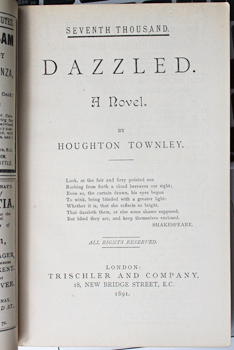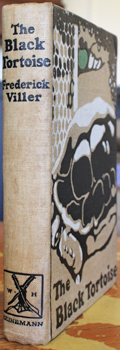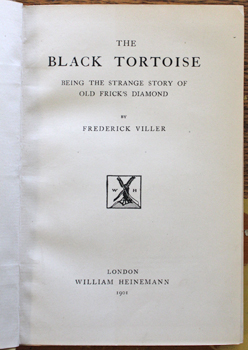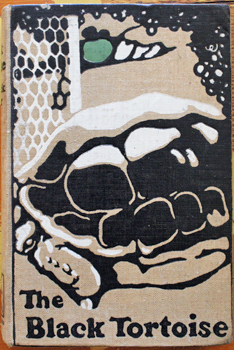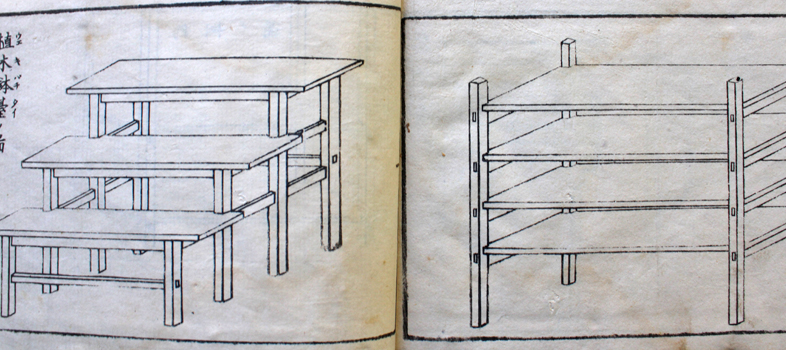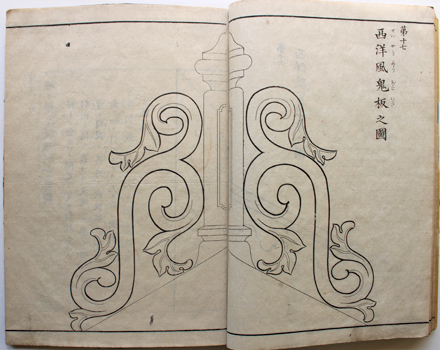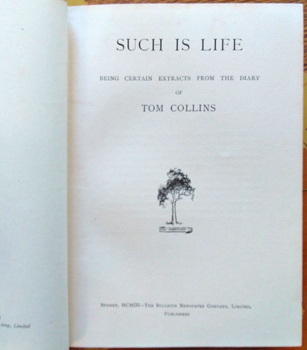





Werewolf
Street Kamishibai. Yodogawa Manpo & Kahi Ryuji? 狼男 : 3巻 [and] 4巻 [Okami Otoko : 3 kan ... 4 kan]. np. Sadamusha? 195-? Each episode has ten handpainted and varnished sheets on heavy boards, 26x36cm. Text handwritten on the back. These have been wet along the right edge and there is damage. Stamps of the Osaka and Nagoya kamishibai ethics committees, which my informant speculates were self proclaimed entities that existed nowhere other than as stamps on a handful of stories. Au$750
If you've looked at published kamishibai and wondered how it could ever have been popular ... it wasn't. The published stuff was almost all heavy handed propaganda and improving drivel produced without any artistic skill or imagination by government and education agencies and pressed on children in schools. Real street kamishibai was produced by hand by the kamishibai men themselves or by associations - such as the Sadamusha - that acted more or less as lending libraries. Which is not to say that a hell of a lot of street kamishibai wouldn't be described kindly as 'naive'. But enough had to be compelling to bring and keep audiences. Specially through hundreds of episodes, which some stories ran for.
Kamishibai was not long lived. It was more or less born with cinema and died with television, and the greatest works, as far as they have survived, were produced toward the end, during the occupation after the war. The connection to film serials is inescapable of course but kamishibai is not burdened with technical restraints. If you can imagine it, you can draw it and you can tell the story.
Here are two complete episodes of Okami Otoko which translates as werewolf or wolfman. It is, I'm told, the revenge tale of Yagi Harusaku, a one legged man who turns werewolf at full moon. Unfortunately, without an episode showing that I don't know whether he's still a leg short in wolf form. I wonder whether anyone living knows the whole story. As far as I can figure, when the kamishibai industry ground to a halt the kamishibai men just packed away, or threw away, whatever episodes they had. If a large hunk of a story or, something I've never seen, a whole story was held by the association you can be sure it was dull, rarely wanted.
Kamishibai are public stories usually told by kamishibai men who set up a folding stand on the back of their bicycles and acted the dramas illustrated on the cards. With the plates in order, the text for the first picture is on the back of the last. The sheets are transferred to the back as the story continues; the text for the second picture is on the back of the first, and so on.




















